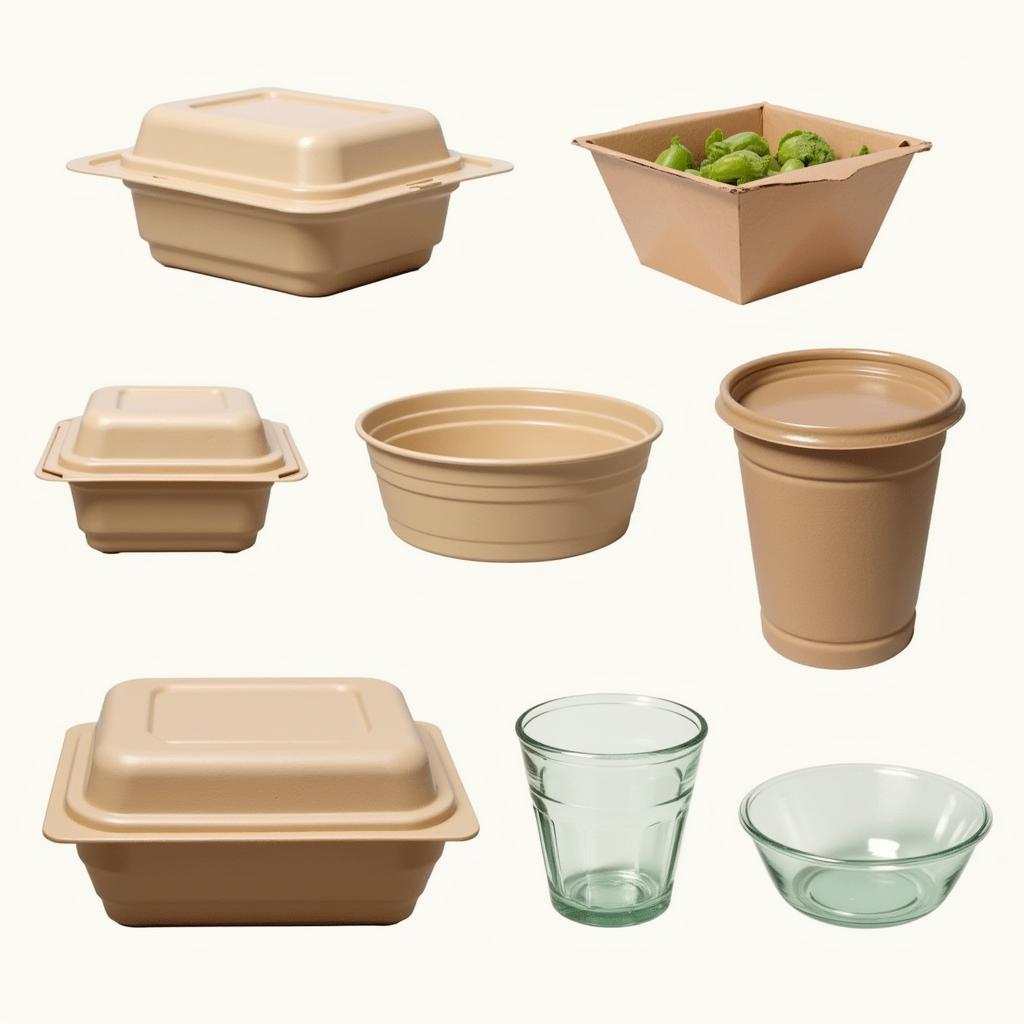Foam Containers For Food have been a staple in the food service industry for decades. From takeout containers to coffee cups, their lightweight and insulating properties make them a popular choice. But are they the right choice for you? This guide delves into everything you need to know about foam containers for food, from their benefits and drawbacks to eco-friendly alternatives.
Understanding Foam Food Containers: Types and Uses
Foam containers for food, often referred to as styrofoam, are typically made from expanded polystyrene (EPS). This material is lightweight, inexpensive, and provides excellent insulation, keeping food hot or cold for extended periods. They are commonly used for:
- Takeout and Delivery: styrofoam to go food containers are ideal for transporting hot or cold meals.
- Leftovers: Storing leftovers in foam containers helps maintain their temperature and freshness.
- Picnics and Outdoor Events: Their lightweight and disposable nature makes them convenient for outdoor gatherings.
- Catering and Food Service: Large quantities of food can be easily packaged and transported using foam containers.
The Pros and Cons of Foam Containers for Food
While foam containers for food offer numerous benefits, they also have some drawbacks.
Advantages of Foam Containers
- Excellent Insulation: Foam containers are known for their exceptional insulating properties. They keep hot food hot and cold food cold, making them perfect for takeout and delivery.
- Cost-Effective: food foam containers are generally less expensive than other disposable food containers, making them a budget-friendly option for businesses.
- Lightweight and Durable: Their lightweight nature makes them easy to transport, while their durability ensures that food is securely contained.
Disadvantages of Foam Containers
- Environmental Concerns: Foam containers are not biodegradable and can take hundreds of years to decompose in landfills. They contribute to environmental pollution and pose a threat to wildlife.
- Potential Health Risks: Some studies suggest that chemicals from foam containers can leach into food, particularly when heated. This raises concerns about potential health implications.
- Difficult to Recycle: Although some areas do recycle foam containers, the process is more complex than recycling other materials. styrofoam food container often end up in landfills.
Eco-Friendly Alternatives to Foam Containers
 Eco-Friendly Alternatives to Foam Food Containers
Eco-Friendly Alternatives to Foam Food Containers
As awareness of environmental issues grows, many businesses and individuals are seeking eco-friendly alternatives to foam containers for food. Some popular options include:
- Biodegradable Containers: Made from materials like sugarcane bagasse, bamboo, or paper pulp, these containers decompose naturally and are a sustainable alternative.
- Reusable Containers: Glass, stainless steel, and plastic containers can be washed and reused multiple times, reducing waste and environmental impact.
- Compostable Containers: These containers break down into nutrient-rich compost, making them an environmentally friendly choice.
Are Foam Food Containers Safe?
The safety of dart foam food containers has been a subject of debate. While they are generally considered safe for short-term use, concerns remain about the potential leaching of chemicals into food, particularly when heated. Choosing high-quality foam containers and avoiding heating them can minimize potential risks.
“Consumers should be aware of the potential risks and choose alternatives when possible,” advises Dr. Emily Carter, a food safety expert.
Making Informed Choices: Selecting the Right Food Containers
Selecting the right food container involves considering various factors, including the type of food being stored, the duration of storage, and the environmental impact.
“Businesses should prioritize sustainable packaging solutions while ensuring food safety,” adds John Miller, a sustainability consultant. styrofoam containers for food remain a popular choice due to their cost-effectiveness, but eco-friendly alternatives are becoming increasingly accessible.
Conclusion
Foam containers for food offer convenience and insulation, but their environmental impact and potential health concerns are important considerations. By understanding the pros and cons, exploring eco-friendly alternatives, and making informed choices, we can minimize our impact on the planet while ensuring food safety.
FAQ
- Are all foam containers made from the same material?
- Can foam containers be microwaved?
- What are the best eco-friendly alternatives to foam containers?
- How can I dispose of foam containers responsibly?
- Are there regulations on the use of foam containers for food?
- What are the long-term environmental effects of foam containers?
- Are there any health risks associated with using foam containers for food?
Need further assistance with foam containers and sustainable packaging solutions? Contact us at Phone: 02437655121, Email: minacones@gmail.com or visit us at 3PGH+8R9, ĐT70A, thôn Trung, Bắc Từ Liêm, Hà Nội, Việt Nam. We have a 24/7 customer service team ready to help.